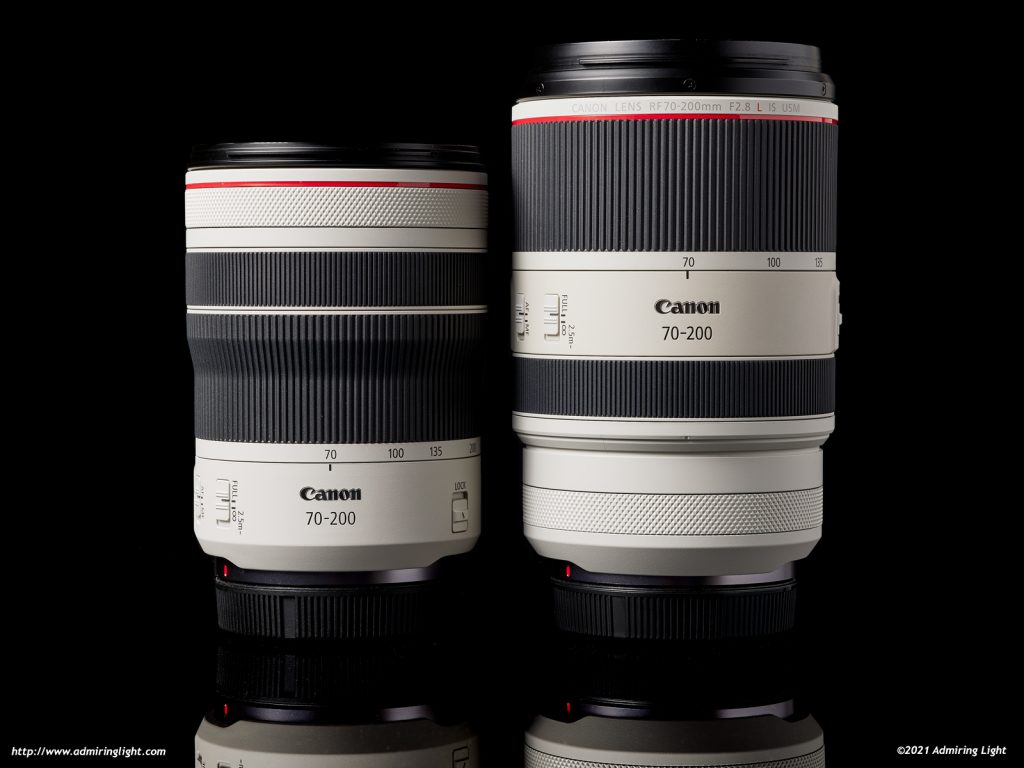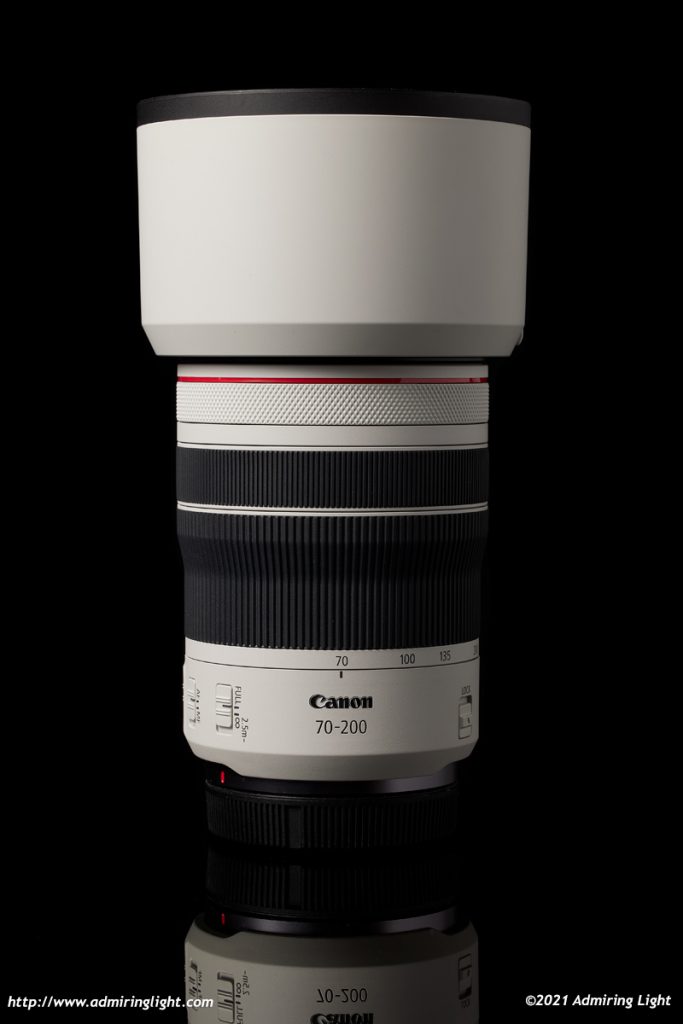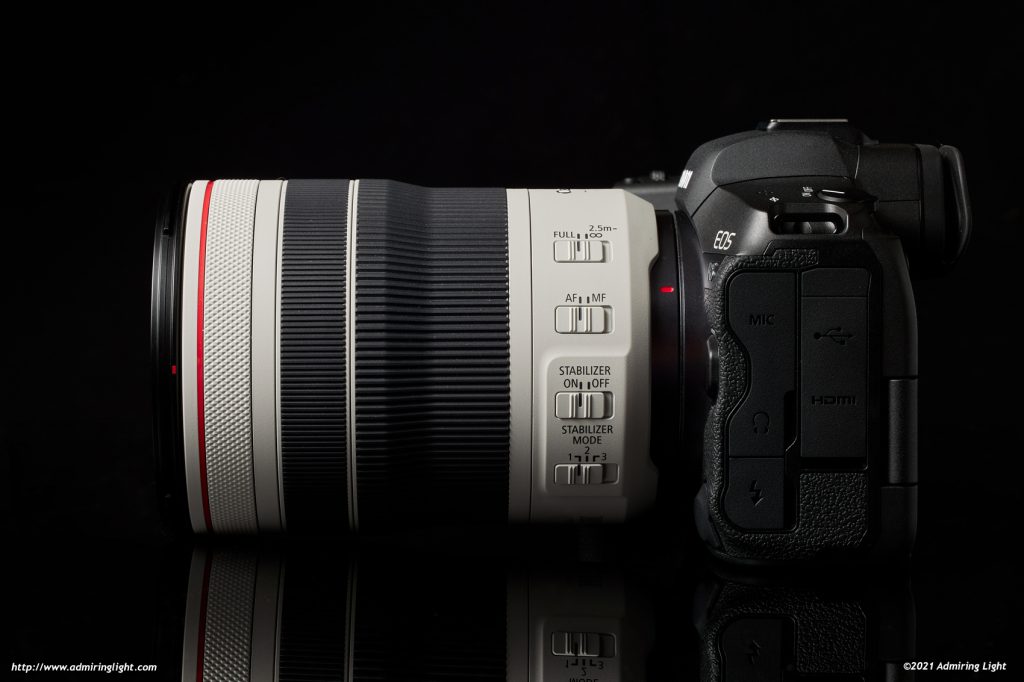As Canon’s RF mount lens lineup continues to grow, we are finally starting to see some of the staple lenses for advanced amateurs come forward. While Canon released the compact and excellent RF 70-200mm f/2.8L IS last year, many enthusiasts were hoping for a similar treatment for the very popular f/4 telezoom line. Well it’s here: the RF 70-200mm f/4L IS, and Canon has made it very small indeed. Let’s check it out.

Construction and Handling
If you’ve handled any of the RF mount lenses, you already know how this lens feels. The lens is constructed of Canon’s engineering plastics on a metal mount, with the distinctive off-white color of Canon’s L series telephoto lenses. The lens is well assembled and feels rather solid. The broad rubberized zoom ring moves extremely smoothly, though requires more effort to twist than the old internal EF designs. The focus-by-wire manual focus ring turns smoothly, but without much damping. Unlike the f/2.8 lens, the 70-200mm f/4L has its control ring at the end of the lens, and it turns with satisfying clicks.

Like the faster f/2.8 variant, the RF 70-200mm f/4L IS features an extending zoom design, which keeps the lens incredibly compact. The lens extends about 2 inches when zooming to 200mm. The extending barrel is well constructed, however there is a tiny bit of play in the barrel when extended, unlike the rock solid extending barrel of the f/2.8 version. Also like the f/2.8 version, the RF 70-200mm f/4L IS can’t take RF teleconverters.

The lens is just slightly longer than the RF 24-105mm f/4L IS, and is actually very slightly lighter than that lens. As a result, this lens will fit in most any bag with ease, and can be carried around without worrying about weight. The f/2.8 version was small for its aperture, and the f/4 version is even smaller, making it an obvious choice for backpacking or other situations where size and weight are important.

While the RF 70-200mm f/2.8L comes with a removable tripod collar and the EF versions of the 70-200mm f/4L had space for one, neither is the case with the RF 70-200mm f/4L. While this does mean that you won’t be able to simply twist the lens inside the collar to switch from landscape to portrait orientation, the lens is certainly light enough to operate without a collar, and the balance on a tripod is perfectly fine.

The lens comes with a white plastic lens hood. The hood is fairly large for the size of lens, but it’s definitely more compact than the monstrous hood packaged with the f/2.8 lens. On my f/2.8 version, I tend to leave the stock hood at home, and I purchased the ES-83 hood for the RF 50mm f/1.2 to replace it, as it is tight to the lens and doesn’t add bulk in the bag. With the 70-200mm f/4L hood, I don’t feel that it is so large as to require replacement, though it is still a bit larger than the ES-83. It’s worth noting that the hood bayonet on both 70-200mm lenses in the same, so you can interchange all of the hoods with each other. In fact, the ET-83G hood that comes with this lens would make a nice replacement for the 70-200mm f/2.8L if one wants to keep the white color while slimming the hood down a little.

The side of the lens features four switches, just like its f/2.8 brother. There’s a focus limiter, which I found wasn’t generally needed, a manual focus/autofocus switch, and then two switches for the Image Stabilizer: one to turn it on or off, and the second to switch between the three IS modes (full, panning and only when tripping the shutter).
Focus Breathing
The RF 70-200mm f/4L’s extending design also comes with a notable change in the level of focus breathing compared to the EF versions. Similar to the f/2.8 lens, the RF 70-200mm f/4L focus breathes in the opposite direction to its EF counterpart. The RF lens will appear to zoom out when focusing closely, while the EF version will appear to zoom in when focusing closely.
As a result, the RF lens appears to be quite a bit shorter than the EF version for close focus work. The RF version makes up for this by being able to focus considerably more closely, and so the maximum magnification of both lenses are similar.
Autofocus and Stabilization
The RF 70-200mm f/4L IS features dual nano-USM focus motors. This technology has already proven to be excellent, and indeed the focus on the RF 70-200mm f/4L is extremely fast, quiet and accurate. In single shot mode, focus locks nearly instantly and with outstanding accuracy. In continuous focus, it’s easily able to keep up with tracking moving subjects while shooting at 12 or 20 fps bursts on the R5 and R6.

The 70-200mm f/4L IS features optical image stabilization that is rated for 5 stops on its own, or up to 7.5 stops in conjunction with the IBIS of the R5 and R6. These estimates are often overstated in comparison to real-world usage. I found that to be the case here as well, but it still does an excellent job. In my testing, I could fairly consistently get sharp shots at 1/4 second at 200mm, which is around 6 stops of extra stabilization beyond what I could normally achieve.





Leave a Reply